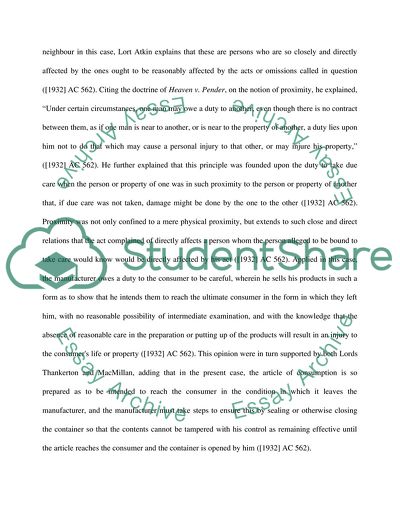Cite this document
(Donoghue v Stevenson Essay Example | Topics and Well Written Essays - 1500 words, n.d.)
Donoghue v Stevenson Essay Example | Topics and Well Written Essays - 1500 words. Retrieved from https://studentshare.org/law/1721277-does-the-spirit-of-donoghue-v-stevenson-still-survive-after-caparo-industries-plc-v-dickmanlaw-essay
Donoghue v Stevenson Essay Example | Topics and Well Written Essays - 1500 words. Retrieved from https://studentshare.org/law/1721277-does-the-spirit-of-donoghue-v-stevenson-still-survive-after-caparo-industries-plc-v-dickmanlaw-essay
(Donoghue V Stevenson Essay Example | Topics and Well Written Essays - 1500 Words)
Donoghue V Stevenson Essay Example | Topics and Well Written Essays - 1500 Words. https://studentshare.org/law/1721277-does-the-spirit-of-donoghue-v-stevenson-still-survive-after-caparo-industries-plc-v-dickmanlaw-essay.
Donoghue V Stevenson Essay Example | Topics and Well Written Essays - 1500 Words. https://studentshare.org/law/1721277-does-the-spirit-of-donoghue-v-stevenson-still-survive-after-caparo-industries-plc-v-dickmanlaw-essay.
“Donoghue V Stevenson Essay Example | Topics and Well Written Essays - 1500 Words”, n.d. https://studentshare.org/law/1721277-does-the-spirit-of-donoghue-v-stevenson-still-survive-after-caparo-industries-plc-v-dickmanlaw-essay.


